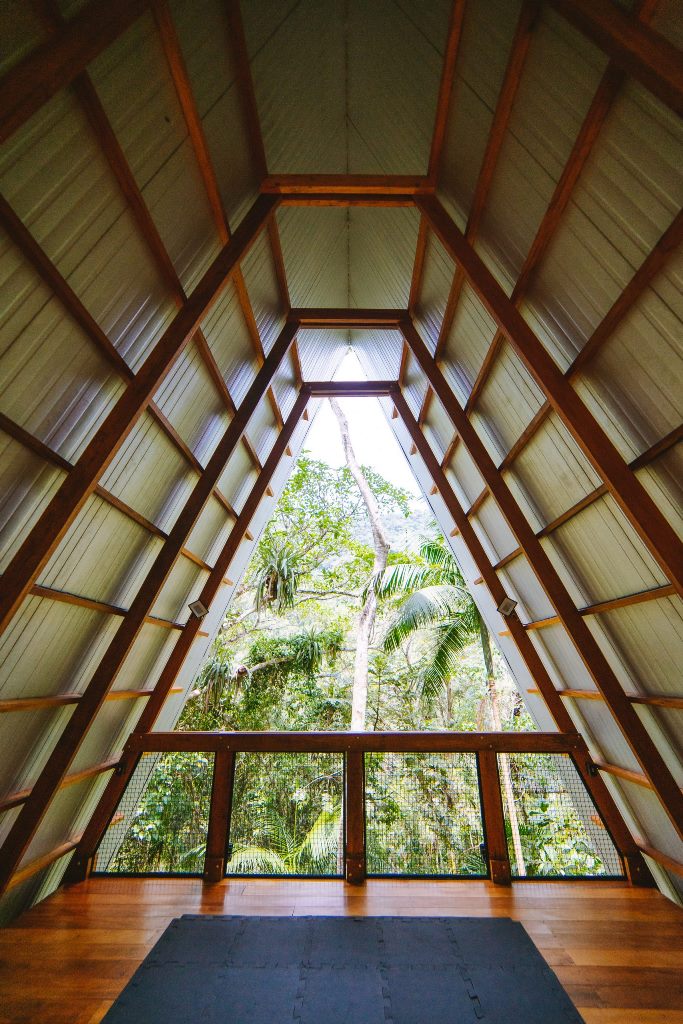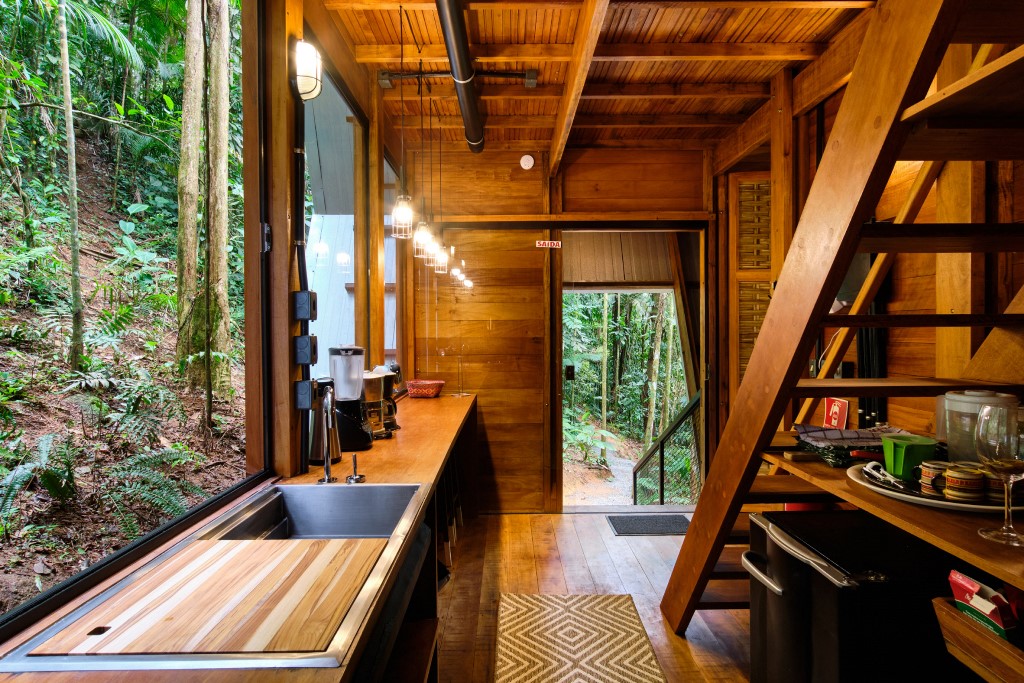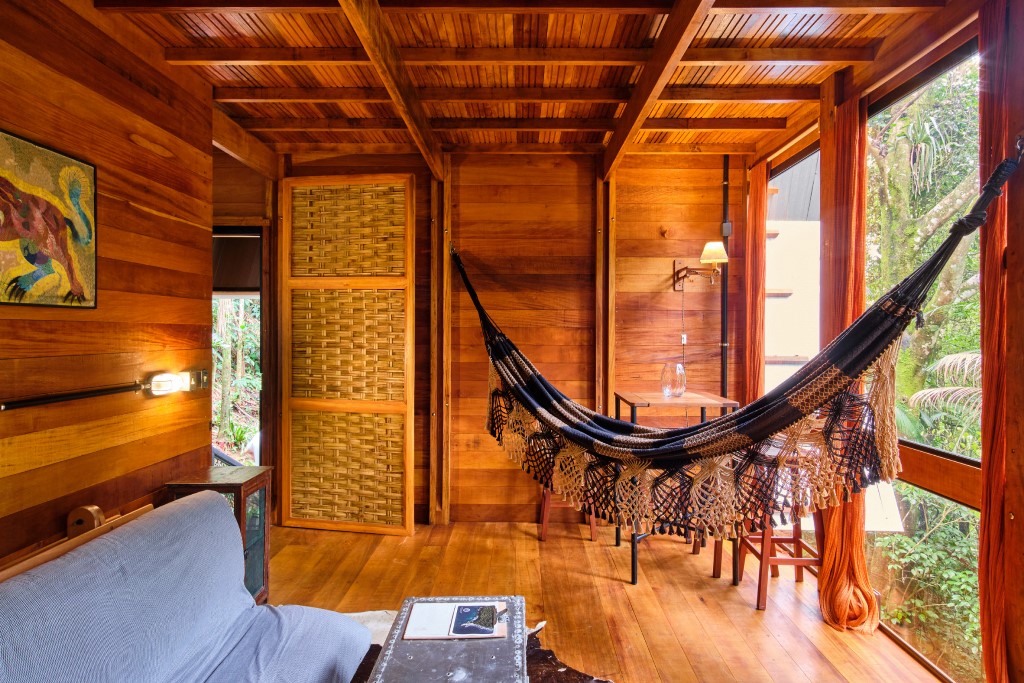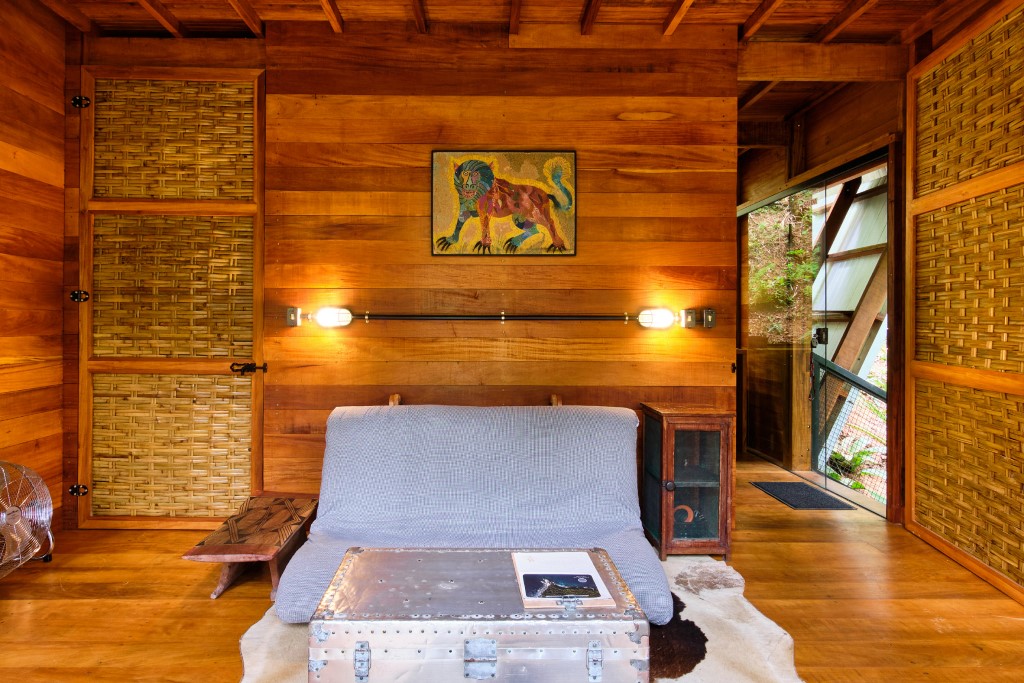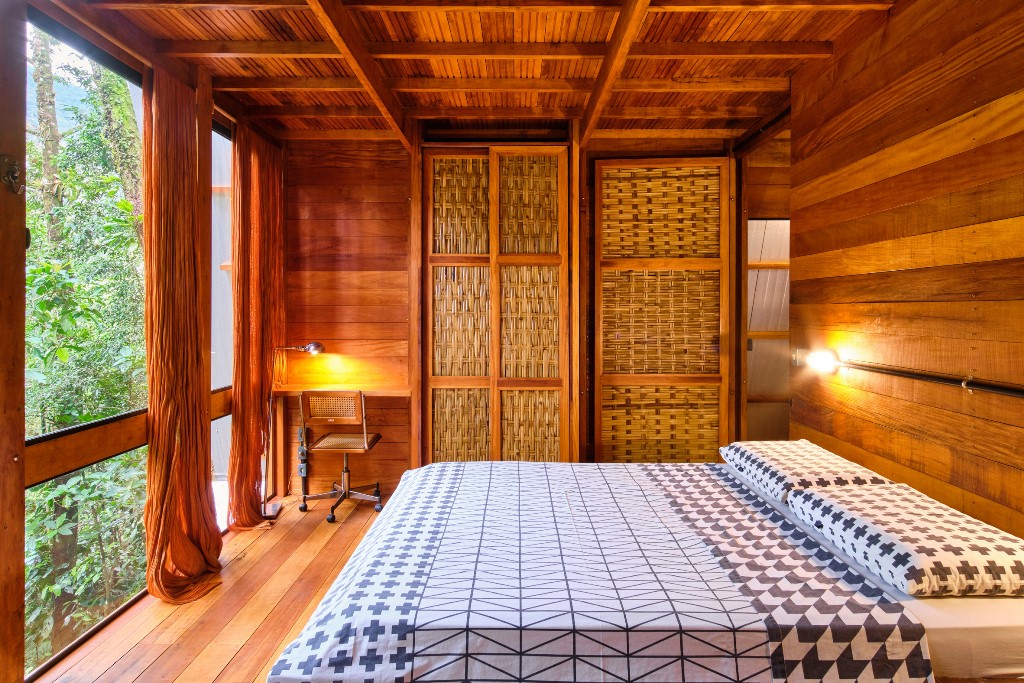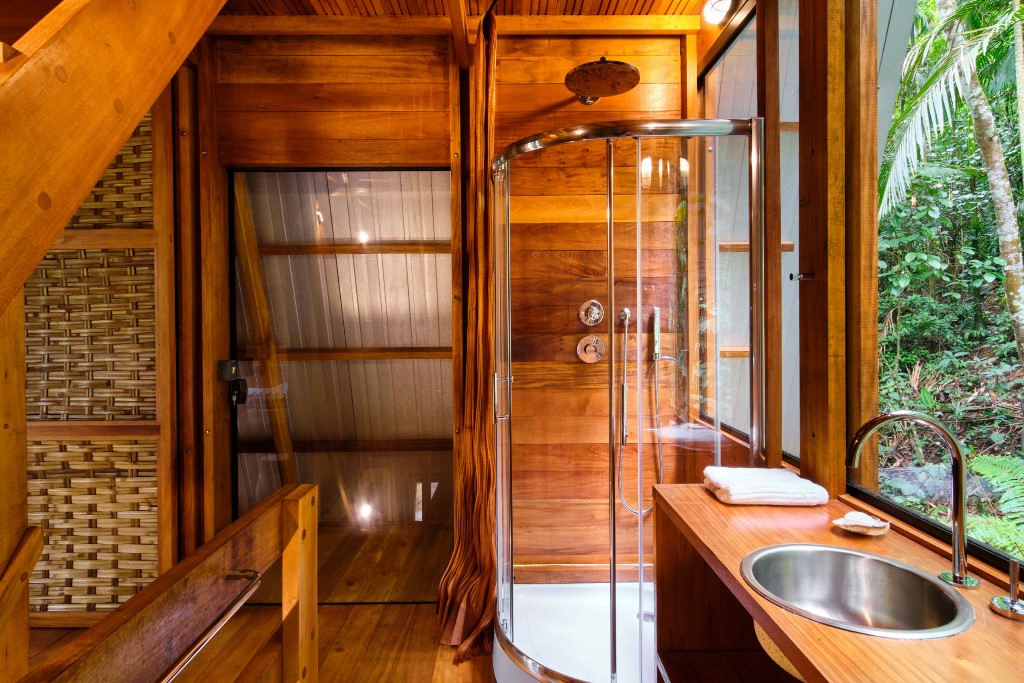When coronavirus broke out, Marko Brajovic took his wife, two children and dogs to live in ARCA, a house he designed in the Brazilian part of the Atlantic Forest. He built the Monkey House cabin in its grounds as a guest house for friends to stay.
Brajovic decided to build the cabin up on stilts so it sits amongst the trees after observing the return of some beloved local wildlife, which gives the cabin its name. Monkey House occupies a six-by-five meter gap between the trees. It sits on a forest of slim stilts, a system Brajovic designed after observing how the Juçara palm trees native to the forest uses its roots to anchor its slim stem to the earth. The architect selected garapeira wood – a tropical hardwood that is dark in color – for the cabin’s frame. The cabin’s exaggerated gable roof is made of Galvalume, a treated type of corrugated metal. The pandemic made constructing Monkey House tricker than usual.
Strict sanitary conditions limited the logistics and the team to only three constructors. The second challenge was to build in height in the middle of the forest with ready-made scaffolding on-site, as there were no suppliers delivering any equipment due to pandemic and as well the area being difficult to access. Windows cover the front of the cabin. Its topmost level is open at the front and back yet sheltered by the apex of the roof, forming a semi-sheltered terrace amongst the treetops.
Inside the cabin is split over two levels, with a large living area and a smaller galley-style kitchen and dining area. Upstairs there is a bedroom and bathroom. The living room can be used as an extra bedroom for guests. Interiors feature more wood, with bamboo elements and curtains made by local communities from fishing nets. Furniture is a mixture of Japanese design and objects made by the Guaraní, indigenous people from across southern Brazil and Paraguay.

